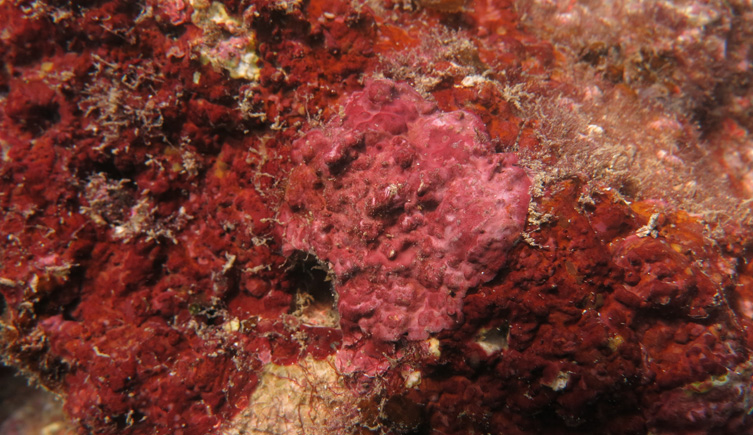Application details
Deadline to apply: Monday 20 January 2025
UK applicants only

© Hamizan Yusof/Shutterstock
The red calcified coralline algae are intriguing organisms. Ubiquitous in the world’s seas from the poles to the tropics, they are morphologically highly diverse, slow growing, one of the longest living groups of organisms on the planet (Frantz et al. 2005) and include the deepest known photosynthetic organism to 290 m deep (Littler et al. 1991).
As habitat-forming ecosystem engineers, they support a large diversity of organisms making them essential for the conservation of the biodiversity they support. They are an integral component of coral reefs and for coral settlement (Cornwall et al. 2023). Maerl beds, i.e. habitats of free-living coralline algal nodules, are nursery grounds for fish and shellfish (Kamenos et al. 2014).
Once not considered significant in carbon sequestration, increasing evidence suggests that calcified coralline algae do play a role in blue carbon (Mao et al., 2024; Burrows et al. 2024). These slow-growing, long-lived habitats are also potentially vulnerable to change. Furthermore, new calcified coralline algae ecosystems are still being discovered. Conversely, they are threatened by ocean acidification, and are impacted by increasing seawater temperatures, pollution and dredging for fish (e.g. Melbourne et al. 2023, McCoy & Kamenos 2015).
These seaweeds are extraordinarily numerous with over 1101 species described so far. The more we look, the more we find. With an estimated 2000 to 10,000 more species still to be discovered, documenting the calcified coralline algae is an immense task.
However, the case for doing so is compelling and urgent not least because of the key role these seaweeds play in marine ecosystem function and as such require conservation. The results will also enable us to address why there so many species, how are they distributed and how they are evolutionarilyrelated.
Britain supports a rich seaweed flora (Brodie et al. 2016), including many calcified coralline algae. A comprehensive study was undertaken on British calcified coralline seaweeds thirty years ago (Irvine & Chamberlain, 1994) based on traditional techniques. Since then, new species of calcified coralline algae have been described using molecular approaches (Walker et al. 2012, Melbourne et al. 2017) but a comprehensive revision is required using state-of-the-art techniques. With high levels of cryptic diversity in the red algae, it is almost certain that new discoveries will be made.
This project provides a unique opportunity for you to i) document coralline algal diversity of Britain using novel genomic approaches, ii) undertake an in-depth study of species ecology/distribution, iii) explore holobiomes of specific species, iv) determine traits of specific species, and v) study the results in relation to the North Atlantic/rest of the world. You will also be able to explore historical and contemporary collections data at the Natural History Museum (NHM) and work with the members of the Global Seaweed Biodiversity Group. The outcome will provide an important baseline for conservation and management of calcified coralline algae in Britain.
This project would be suitable for students with a degree in the Biological Sciences, such as Marine Biology or a closely related environmental subject. Familiarity with molecular techniques would be an advantage.
Please note: Due to the nature of this project and to comply with visa regulations, only UK students should apply.
Deadline to apply: Monday 20 January 2025
UK applicants only
Natural History Museum,
Swansea University

.png)